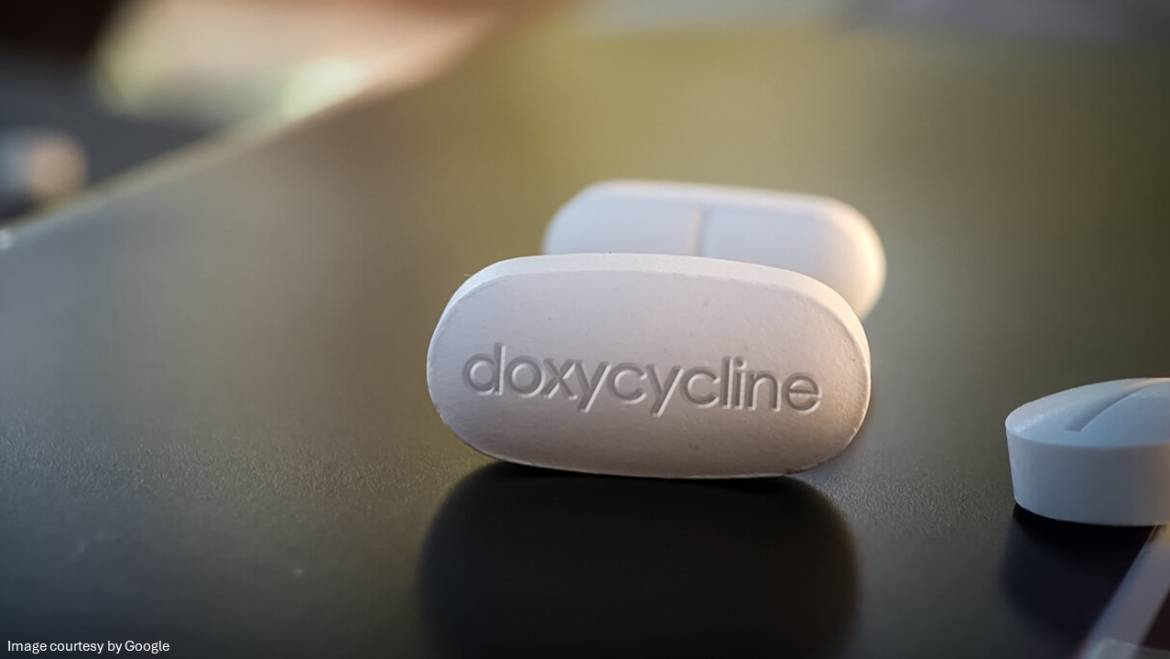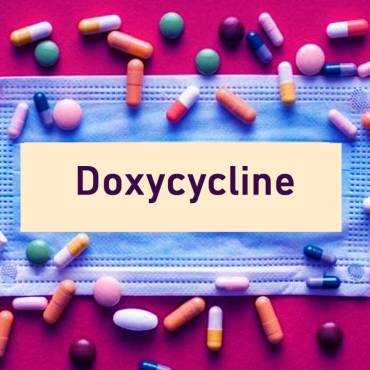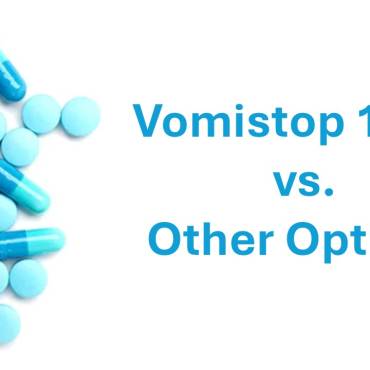What is Vibramycin?
Vibramycin is a prescription medicine in capsule/tablet form containing 100 mg of doxycycline. Doxycycline is a broad-spectrum antibiotic agent member of the tetracycline class of antibiotics. In the early 1960s, Pfizer Inc. created doxycycline clinically and began marketing it under Vibramycin 100mg. Doxycycline got the approval of the Food and Drug Administration (FDA) for the prevention of treatment of specific conditions within each of the following categories: sexually transmitted infections, bacterial infections, rickettsial infections, Lyme disease, respiratory tract infections, acute intestinal amebiasis, anthrax, ophthalmic infections, etc.
Patients can buy Vibramycin when prescribed to treat bacterial infections, including:
- Respiratory tract infections
Pneumonia: You can buy Vibramycin for bronchial and lobar pneumonia, caused by pathogens sensitive to doxycycline.
- Infection of the ENT region
Tonsillitis, bronchitis, pharyngitis, sinusitis, and otitis media. For upper respiratory tract infections with beta-hemolytic streptococci of group A, penicillin is usually the antibiotic of choice, including for the prevention of rheumatic fever.
- Infections of the urinary tract and genital organs
Urethritis, cystitis, non-specific urethritis, pyelonephritis. In gonococcal infections, a Vibramycin tablet is indicated as a concomitant treatment for suspected or proven coinfection caused by chlamydia trachomatis.
- Gastrointestinal infections
Vibramycin tablet is indicated for the treatment and prevention of cholera.
- Skin and soft tissue infections
Phlegmon, impetigo, abscesses, furunculosis, paronchia, infected traumatic and operative wounds. The required surgical measures should be undertaken to treat infections of the soft tissues with doxycycline.
- Ophthalmological infections
Vibramycin (Doxycycline is indicated in trachoma, even though the causative agent is not always eradicated.
Swimming pool conjunctivitis can be treated with Vibramycin tablets alone or with topical medications.

- Lyme disease
Lyme disease, skin manifestations with transient joint manifestations and transient and neurological manifestations limited to the face.
- Epidemic relapsing and louse-borne typhus fever
Vibramycin is used to treat epidemic relapsing fever and louse-borne typhus fever.
- Leptospirosis
Vibramycin tablet is used for the prevention and treatment of leptospirosis.
- Other infections
Prostatitis, ornithosis, syphills, chancroid (ulcus molle), granuloma inguinale, and Vincent’s infection (angina). Malaria because of chloroquine-resistant plasmodium falciparum.
Prevention
In case of an enhanced risk of infection, Vibramycin is used to prevent scrub typhus, Traveller’s diarrhea, and leptospirosis.
Official recommendations for the appropriate use of antibiotic medication should be considered. Specifically, the recommendations are to prevent the increase of antibiotic resistance.
Dosage and administration
The usual dosage and frequency of administering Vibramycin antibiotics differ from other tetracyclines. Exceeding the recommended dosage may result in an increased incidence of adverse effects. When used to treat streptococcal infections, treatment should be continued for at least ten days to prevent the development of rheumatic fever or glomerulonephritis.
Adults
The usual dosage of Vibramycin is 200 mg on the first day, given as a single dose, and 100 mg on each subsequent day. In the case of chronic urinary tract infections, a daily dose of 200 mg should be given throughout the entire treatment duration.
Special dosage regimen
For the treatment of acute epididymal-orchitis caused by chlamydia trachomatis or Neisseria gonorrhoeae, ceftriaxone or other appropriate cephalosporin to treat gonococcal infection; additionally, doxycycline 100 mg orally twice a day, for at least ten days to treat trachomatis infection.
-
- Non-gonococcal urethritis: Vibramycin 100 mg twice daily for at least a week.
- For Lymphogranuloma venereum, Vibramycin is 100 mg orally twice daily for at least 21 days.
- For uncomplicated urethral, rectal, endocervical, or pharyngeal infections, Doxycycline Vibramycin 100 mg orally twice a day for a week.
- Suspected chlamydia trachomatis infection concomitant to a gonococcal infection: Vibramycin 100 mg orally twice daily for seven days.
- Primary and secondary syphilis: Non-pregnant, penicillin-allergic patients with primary or secondary syphilis can be treated as per the following dosing regimen: Vibramycin 100mg orally twice a day for 14 days, as an alternative to penicillin therapy.
- For pelvic inflammatory disease: Hospitalized patient: 100 my doxycycline every twelve hours plus cefotoxin 2 g every six hours for at least four days and at least 24 to 48 hours after the patient improves. Then, continue with 200 mg doxycycline per day divided into two doses for a total duration of treatment of 10 to 14 days.

- Outpatient: Doxycycline 100mg orally twice daily for 14 days as adjunctive therapy with a suitable cephalosporin.
- Lyme disease (Stage 1 and 2): Vibramycin 100 mg twice daily for 10 to 60 days as per clinical signs and symptoms and response.
- Malaria: 200 mg a day for at least a week. Due to the potential severity of the infection, quinine should always be given with Vibramycin; the dosage for quinine recommendations varies in different areas.
- For malarial prevention, 100 mg once a day in adults. The dose is 2 mg/kg and given daily for children over twelve. Prevention can start 1 to 2 days before travel to malarial areas. It should be continued daily while traveling in the malaria areas and for four weeks after leaving them.
- For treating relapsing fever and louse-borne typhus, the recommended dose is 100 or 200 mg, as per the severity of the infection.
- 200 mg orally is taken as a single dose to prevent scrub typhus.
- For the treatment and prevention of cholera in adults, a single dose of 300 mg is the recommended dose.
- To prevent Traveller’s diarrhea: 200 mg as a single dose on the first of traveling, followed by 100 mg daily. This medication is not available for use beyond 21 days.
- The recommended dose is 100 mg orally twice a week to prevent leptospirosis.
Vibramycin should be consumed while sitting or standing with adequate fluid at least an hour before a meal and at least an hour before going to bed.
Vibramycin side effects include vomiting, nausea, loss of appetite, upset stomach, mild diarrhea, itching, skin rash, darkened skin color, discharge, vaginal itching, and mild diarrhea.
Buy Vibramycin online
Alldaychemist.com is offering Vibramycin 100 mg at the lowest price. Buy Vibramycin online to get free home delivery. Vibramycin price may vary according to its strength; the medication is available in various strengths, including 100mg and 200 mg. Buy doxycycline online at the best price in the USA.
admin
Latest posts by admin (see all)
- Sildenafil Jelly – A Faster-Acting Alternative to Traditional ED Tablet - August 22, 2025
- Not Just Thirsty: Surprising Signs Your Body Is Dehydrated - August 8, 2025
- Bone Health Beyond Calcium: Underrated Nutrients You’re Probably Missing - August 8, 2025



